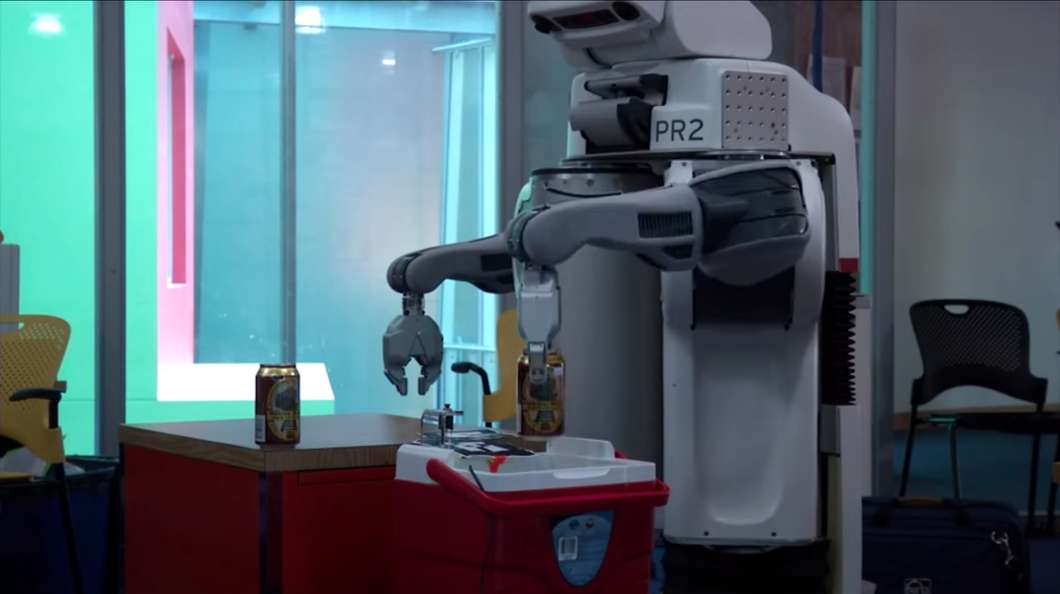Move over bartenders, robots will soon be doing your job. MIT’s Computer Science and Artificial Intelligence Laboratory (CSAIL) presented a series of three robots that can work together, quickly and accurately, delivering beverages in unexpected changing environments.
To test out their approach, the CSAIL team converted their lab into a mini-bar with a PR2 robot as the bartender and two four-wheeled Turtlebot robots, who would ask human customers in different offices what they wanted for drinks. The Turtlebots would then work to reason which orders went to each room and when other robots delivered drinks, making the flow as smooth as possible.

One of the biggest challenges for the team was getting the robots to work together in the human world full of uncertain, changing variables, primarily relating to three main topics: sensors that are not as precise at determining location and status of themselves, outcomes that may be unpredictable, like a dropped or spilled drink, and inter-robot communication.
Other challenges that the CSAIL team faced included the supply robot could only serve one waiter at a time and there was limited, short proximity communication between the robots. These communication difficulties forced the team to come up with a new planning approach for the robots.
“These limitations mean that the robots don’t know what the other robots are doing or what the other orders are,” MIT graduate student Ariel Anders said. “It forced us to work on more complex planning algorithms that allow the robots to engage in higher-level reasoning about their location, status, and behavior.”
The new approach aimed to make the robots see tasks as human see them through a multi-step process called “macro-actions,” that stems on the idea of prior and remembered experiences. As humans, we don’t necessarily think before we walk; it is second nature. The goal of the team was to have the same outcome with robots.
“You’d like to be able to just tell one robot to go to the first room and one to get the beverage without having to walk them through every move in the process,” Anders said. “This method folds in that level of flexibility.”
The macro-action idea named “MacDec-POMDPs,” builds off of the idea of the team’s previous planning models referred to as “decentralized partially observable Markov decision processes,” or Dec-POMDPs.
Currently, the researchers are working to test out the new planning algorithms on a grander scale. The research paper underlying these findings was published in the journal Robotics Proceedings and may be found here. It was authored by Chris Amato, a former CSAIL postdoc who is now a professor at the University of New Hampshire, and co-authored by Duke University professor and former CSAIL postdoc George Konidaris, MIT graduate students Ariel Anders and Gabriel Cruz, MIT professors Jonathan How and Leslie Kaelbling.
Source: Gizmag
Advertisement
Learn more about Electronic Products Magazine





